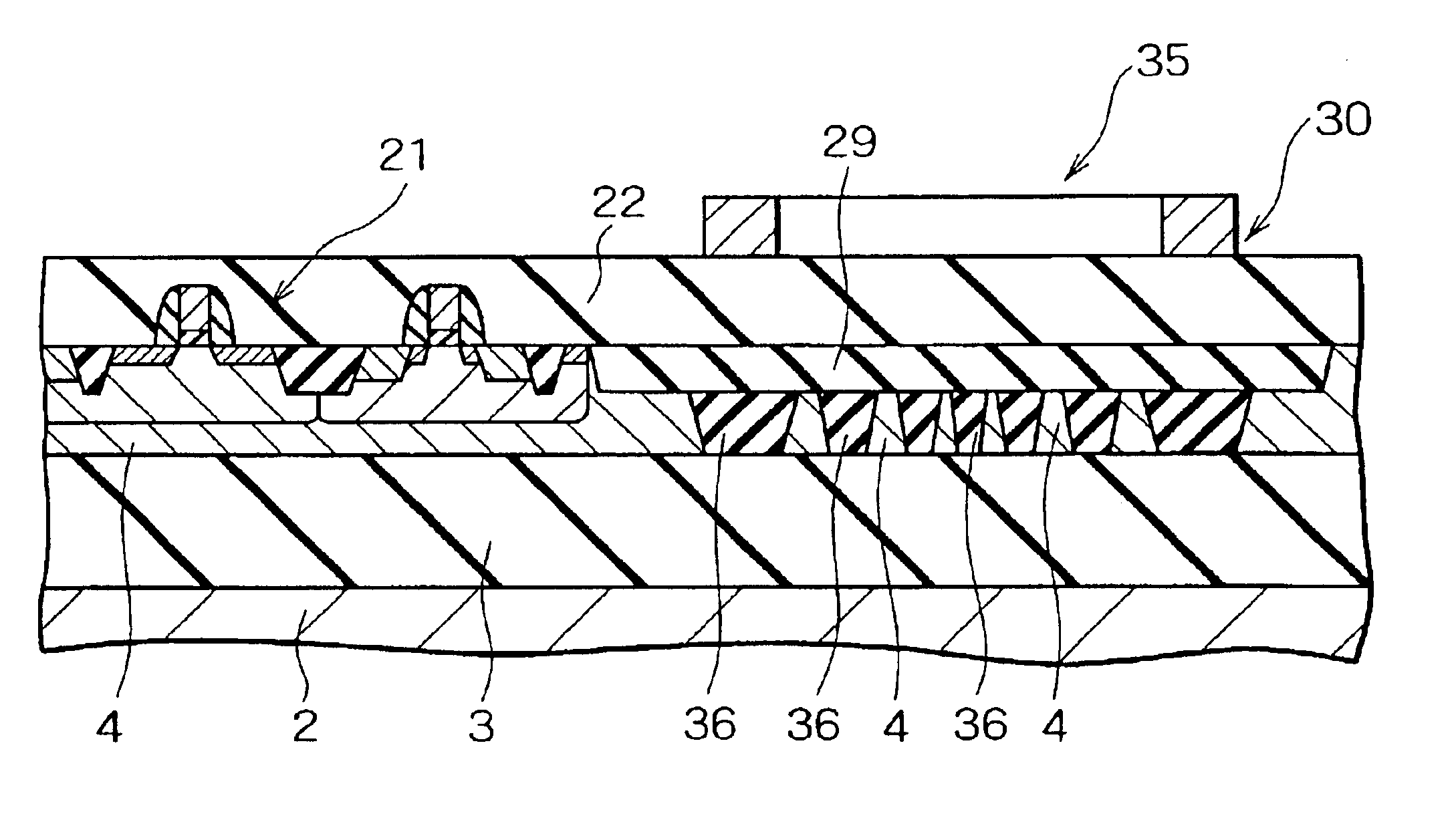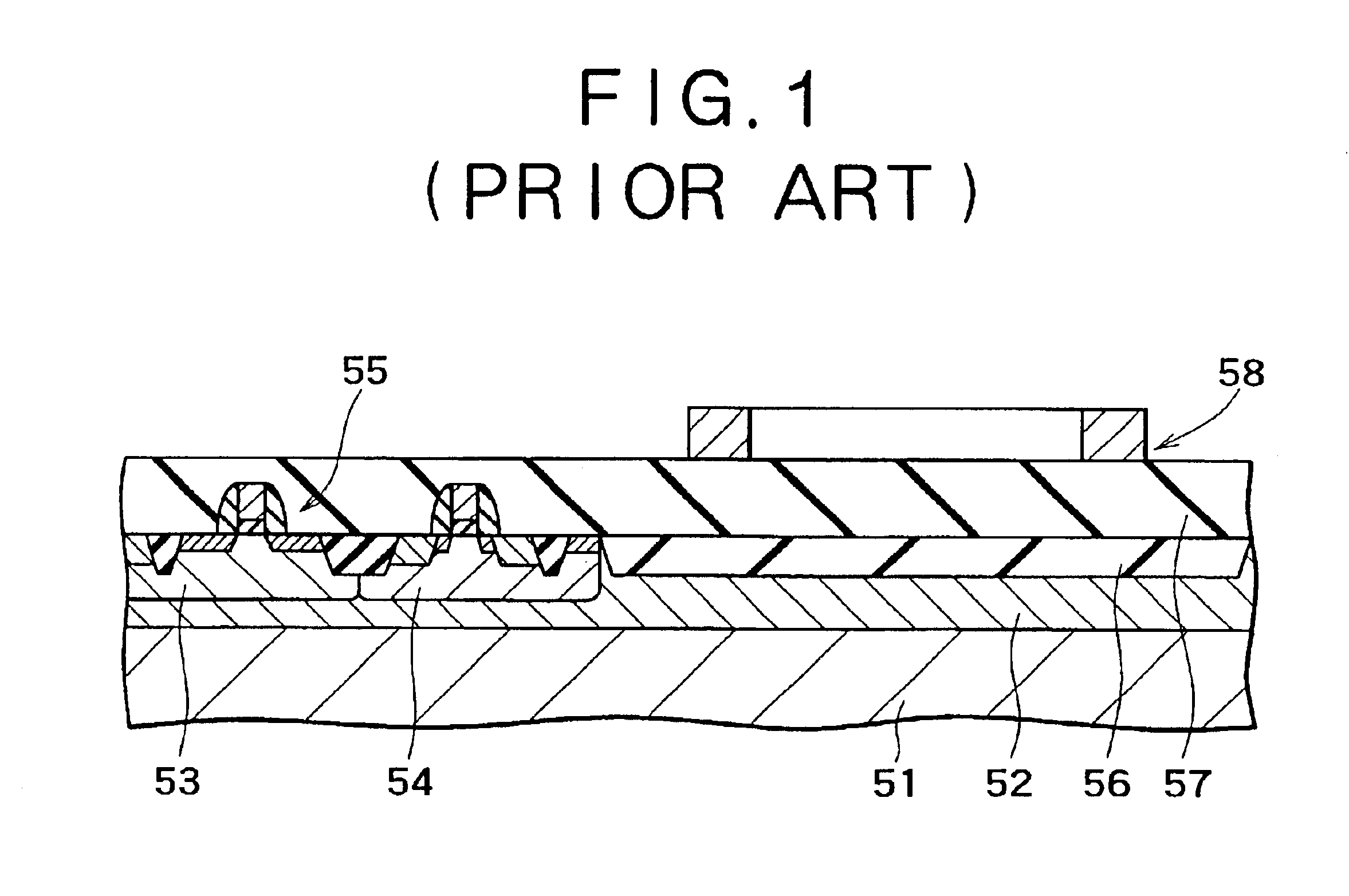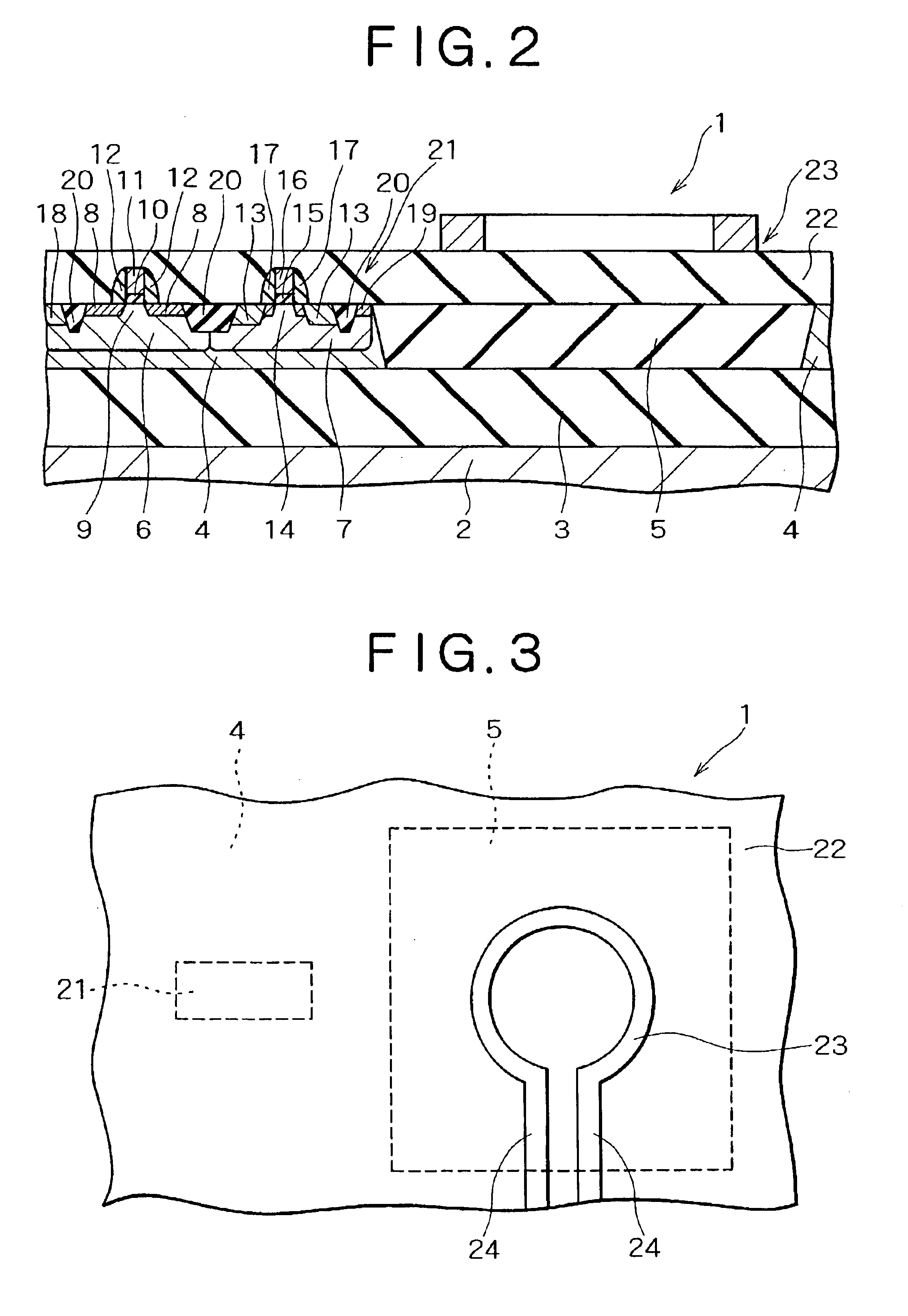Integrated circuit including an inductor, active layers with isolation dielectrics, and multiple insulation layers
a technology of integrated circuits and active layers, applied in the direction of semiconductor devices, electrical apparatus, transistors, etc., can solve the problems of inability to achieve the speed increase of cmos b>55/b>, and inability to achieve the above-described conventional technologies. , to achieve the effect of further suppressing the eddy current within the semiconductor substra
- Summary
- Abstract
- Description
- Claims
- Application Information
AI Technical Summary
Benefits of technology
Problems solved by technology
Method used
Image
Examples
first embodiment
An insulating film 22 is provided above the insulating film 26 and over the CMOS 21, so as to cover the CMOS 21. The bottom surface of the insulating film 22 makes contact with the top surface of the insulating film 26. In addition, an inductor 23 is formed in a region on the insulating film 22, located away from a region above the CMOS 21, that is to say, in a region corresponding to the insulating film 26. The configurations of the insulating film 22 and the inductor 23 are the same as the configurations of insulating film 22 and inductor 23 according to the above-described
As shown in FIG. 6, the inductor 23 is a wire having one winding in a circular loop-form, of which the inner diameter is, for example, 50 μm and the wire width is, for example, 10 μm. Terminal portions 24, making up a pair, are connected to the respective ends of the inductor 23. In addition, as shown in FIG. 6, the insulating film 22 is provided under the inductor 23 and the terminal portions 24, and the insula...
third embodiment
An insulating film 22 is provided above the insulating film 29 and over the CMOS 21, so as to cover the CMOS 21. The bottom surface of the insulating film 22 makes contact with the top surface of the insulating film 29. In addition, an inductor 30 is formed in a region on the insulating film 22 located away from the CMOS 21, that is to say, in a region corresponding to the insulating film 29. The configurations of the insulating films 22 and the inductor 30 are the same as the configurations of the insulating films 22 and the inductor 30 according to the above-described
As shown in FIG. 12, the inductor 30 is a wire in a square loop form having one winding and is made of aluminum, wherein the longitudinal and transverse lengths of the inner dimensions of the wire loop are, for example, 50 μm, the width of the wire is, for example, 10 μm and the thickness of the wire is, for example, 2 μm. Terminal portions 24, making up a pair, are, respectively, connected to the ends of the inductor...
PUM
 Login to View More
Login to View More Abstract
Description
Claims
Application Information
 Login to View More
Login to View More - R&D
- Intellectual Property
- Life Sciences
- Materials
- Tech Scout
- Unparalleled Data Quality
- Higher Quality Content
- 60% Fewer Hallucinations
Browse by: Latest US Patents, China's latest patents, Technical Efficacy Thesaurus, Application Domain, Technology Topic, Popular Technical Reports.
© 2025 PatSnap. All rights reserved.Legal|Privacy policy|Modern Slavery Act Transparency Statement|Sitemap|About US| Contact US: help@patsnap.com



